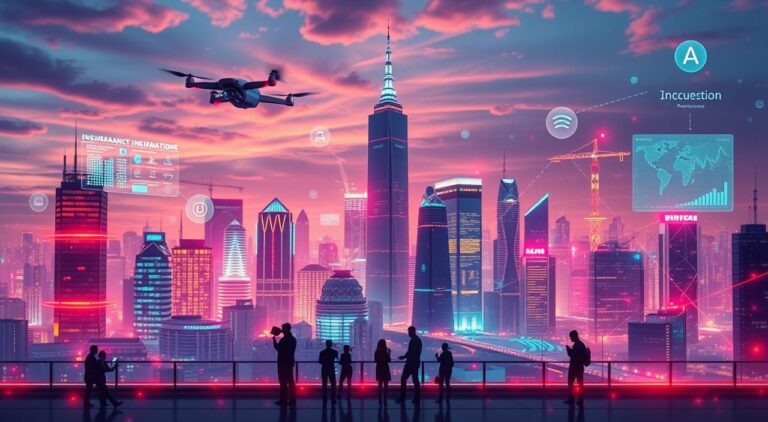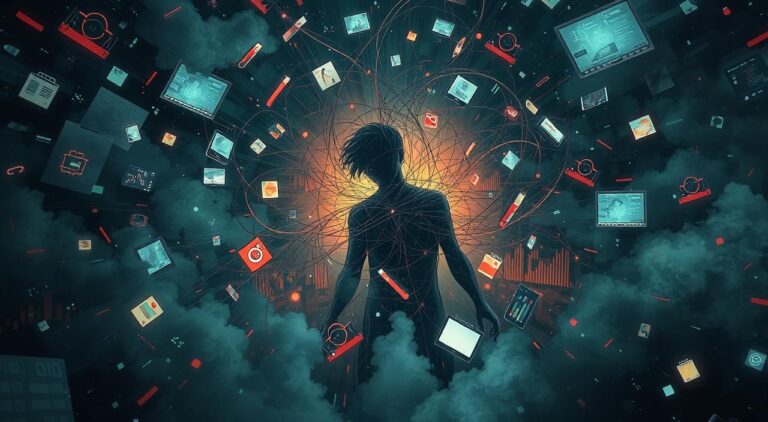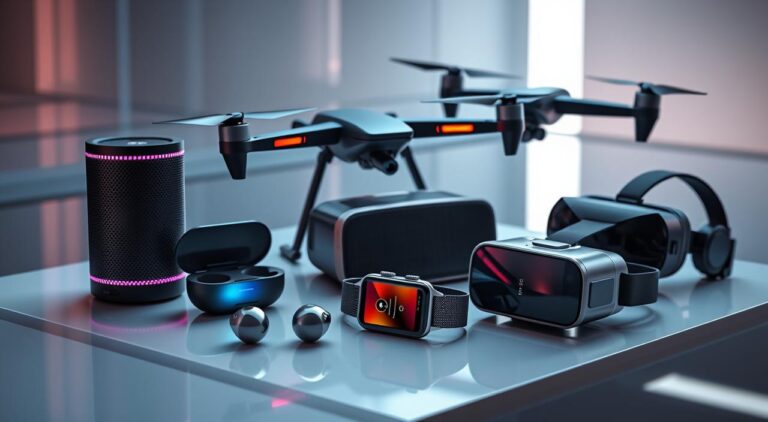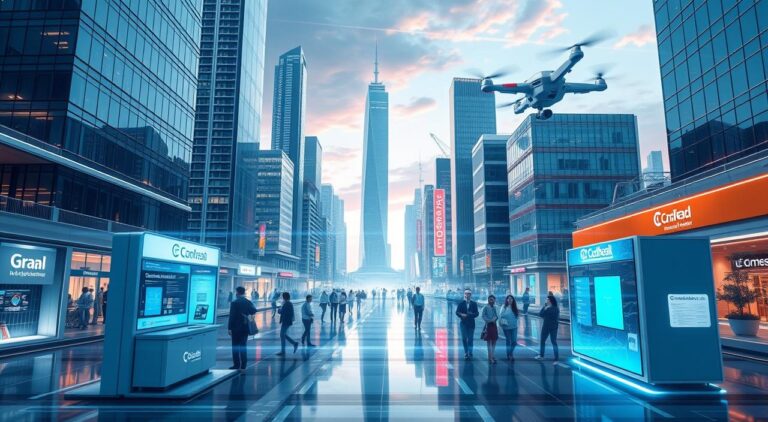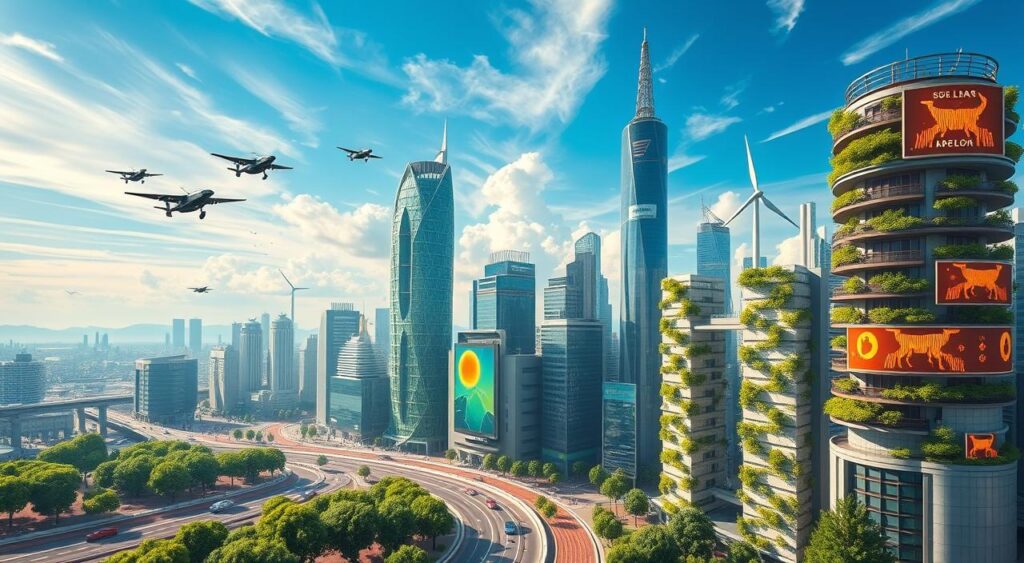
Technology keeps changing and is key to our modern lives. From ancient stone tools to today’s advanced tech, it has shaped our world. But what’s the best way to define this complex idea? As we look into technology’s core, we might understand its true impact better.
One big question is: What’s the best definition of technology? Is it just using science for everyday tasks, or is it more? Looking into tech’s history and growth might change how we see it. It could lead us to a deeper understanding of what technology really is.
Key Takeaways
- Technology is the application of scientific knowledge for practical purposes, especially in industry.
- It encompasses the creation and use of technical means, their interrelation with life, society, and the environment.
- Key people who have contributed to technological development include B.J. Habibie, William Fielding Ogburn, Robert Solow, Anthony F.C. Wallace, and Frank Hamilton Cushing.
- Technology covers a wide range of fields, including computer science, textiles, motion-picture technology, and military technology.
- The best definition of technology is a complex and evolving concept that continues to shape our world in profound ways.
Understanding the Evolution of Technology Throughout History
The story of technology’s growth is a long one, starting with the first humans. It began with simple stone tools and has grown to today’s digital wonders. This journey has greatly influenced how we live and progress.
From Stone Tools to Digital Age
In the Stone Age, our ancestors used natural resources to make tools. The invention of fire was a big step, helping us stay warm and grow our brains. Later, the wheel changed how we moved things and built machines.
Key Historical Milestones in Technological Development
- The printing press, created in the 15th century, made sharing information easier. It helped spread knowledge to more people.
- The telephone, patented in 1876, changed how we talk to each other over long distances. It started the modern phone industry.
- The internet, which started in the late 20th century, connected computers worldwide. It brought us into the Information Age, changing how we communicate and find information.
Impact of Early Innovations on Human Civilization
These early tech breakthroughs changed our world a lot. They helped us explore, trade, and build complex societies. The wheel made moving goods and people easier. The printing press spread ideas far and wide, sparking the Renaissance and Enlightenment.
“Technology is the campfire around which we tell our stories.” – Laurie Anderson
Technology’s growth has been ongoing, with big steps and big changes. As we move forward, knowing where we come from is key. It helps us see what’s next for our species.
Which is the best definition of technology?
The term “technology” has sparked many debates. Scholars and experts can’t agree on one definition. It covers many concepts, tools, and uses. Yet, some big names have shared their views on what technology really is.
Merriam-Webster says technology is “the practical use of knowledge in a certain field” or “a skill from using knowledge.” The Oxford Dictionary calls it “using scientific knowledge for everyday tasks.” Philosopher Emmanuel Mesthene sees it as “organizing knowledge to achieve goals.”
Economist John Kenneth Galbraith looks at it more widely. He believes technology is “using scientific or organized knowledge for tasks.” These views highlight the importance of knowledge and its practical use in technology.
What technology is can vary based on the context. But, most agree it’s about using knowledge to solve problems and make life better. This includes scientific, cultural, or other types of knowledge.
The Scientific Foundation of Modern Technology
Modern technology is built on a strong scientific base. Scientific principles guide us to new tech advancements. This mix of science and tech has led to big changes in our world.
Application of Knowledge in Practical Settings
Modern tech turns scientific discoveries into real-world uses. Researchers and engineers work hard to use science for society’s good. They turn ideas into solutions that move tech forward.
Role of Research and Development
Technology growth relies on research and development. Scientists, engineers, and innovators team up to explore new tech. Their drive for knowledge and innovation speeds up tech’s evolution.
Integration of Multiple Disciplines
Modern tech often needs many fields, like engineering and computer science. Combining these areas makes tech solutions better. This teamwork helps solve complex problems and create new tech.
In summary, the science behind modern tech shows our creativity and drive for knowledge. By using science in real life, doing research, and working together, we see amazing scientific breakthroughs every day.
Core Components of Technological Systems
At the heart of technological progress are the core components that make up any system. These elements work together to ensure our daily technologies function smoothly.
The main parts of a technological system include:
- Hardware – The physical parts, like computers and machines, that make technology work.
- Software – The digital instructions that make technology do its job.
- Networks – The systems that let data move and people communicate.
- Data – The information that technology uses to make decisions and insights.
- Human Interfaces – How we interact with technology, making it easy for us to use.
These parts together form a system that advances technology and brings new ideas. Knowing how they work helps us use technology to solve big problems.
| Component | Description |
|---|---|
| Hardware | Physical components, such as computers, devices, and machinery, that provide the tangible infrastructure for technology to operate. |
| Software | Programs, algorithms, and digital instructions that power the functionality and applications of technological systems. |
| Networks | Interconnected systems that facilitate the exchange of data, communication, and collaboration within and across technological platforms. |
| Data | Information that is processed, stored, and utilized by technological systems to generate insights and drive decision-making. |
| Human Interfaces | Methods and channels through which humans interact with and control technological systems, ensuring seamless integration between people and machines. |
These components together make a complete system that drives innovation. By understanding how they work together, we can unlock technology’s full potential and solve big challenges.
The Role of Innovation in Technological Advancement
Innovation drives the fast pace of today’s technology. It brings us new discoveries in fields like artificial intelligence and nanotechnology. It also introduces disruptive technologies like blockchain and 3D printing. These innovations are changing industries and creating new ways of doing business.
Looking ahead, we can expect big changes in society and the economy. The mix of new technologies and ideas will lead to exciting transformations.
Breakthrough Discoveries and Their Impact
Fields like biotechnology, space exploration, and renewable energy are advancing fast. This has led to a 30% rise in research output over five years. Such breakthroughs are improving our lives.
For example, telemedicine is making healthcare better in remote areas. This has helped reduce unmet medical needs worldwide.
Disruptive Technologies in the Modern Era
Disruptive technologies are changing industries and opening new doors. Blockchain and artificial intelligence are being used in many areas. They help in secure data sharing and improving operations.
Companies that use these technologies often see bigger profits. This is because they can adapt to market changes quickly.
Future Trends and Predictions
The future looks bright with more artificial intelligence, sustainable tech, and human-machine interfaces. Pope Francis has stressed the need to regulate these innovations. This is to protect our society as we move forward.
We can expect even more changes in the coming years. These advancements will likely have a big impact on our world.
| Key Impact of Technological Innovation | Statistics |
|---|---|
| Improved Quality of Life | Medical devices, communication technologies, and educational tools have transformed the way people interact and live, positively impacting societal well-being. |
| Economic Growth and Competitiveness | Countries like Finland and South Korea have experienced notable economic growth due to their focus on technology advancement. |
| Enhanced Efficiency and Productivity | Organizations that implement technology innovations report an average increase of 20% in productivity. |
| Addressing Societal Challenges | Telemedicine solutions have made healthcare services more accessible in remote areas, leading to a decrease in unmet medical needs. |
| Sustainable Development | Adoption of clean technologies has reduced carbon emissions by 15% in the last decade. |
Technology’s Impact on Society and Culture
Technology has changed our society and culture a lot. It has changed how we talk to each other and how we work and learn. Social media and mobile tech have changed how we share and connect.
In schools, tech has made learning more fun and interactive. Students can find lots of info online. Online classes and learning apps offer more flexibility.
Healthcare has also seen big changes thanks to tech. There are apps for tracking health and remote care. Tech in surgeries has also improved care for patients and doctors.
- Technology has made learning more engaging and efficient, with interactive learning materials and online classes.
- The internet has provided 24/7 access to information, enhancing resource availability for learning purposes.
- Technological advancements in healthcare have increased accessibility to treatment and improved services for the elderly population.
But, tech use raises concerns about privacy and the digital divide. Mobile devices can distract us from work or school. Too much tech use can cut down on personal time and face-to-face talks.
As tech keeps changing our world, we must think about both good and bad sides. We need to find a balance. This balance lets us use tech’s benefits while keeping our human connections and values strong.
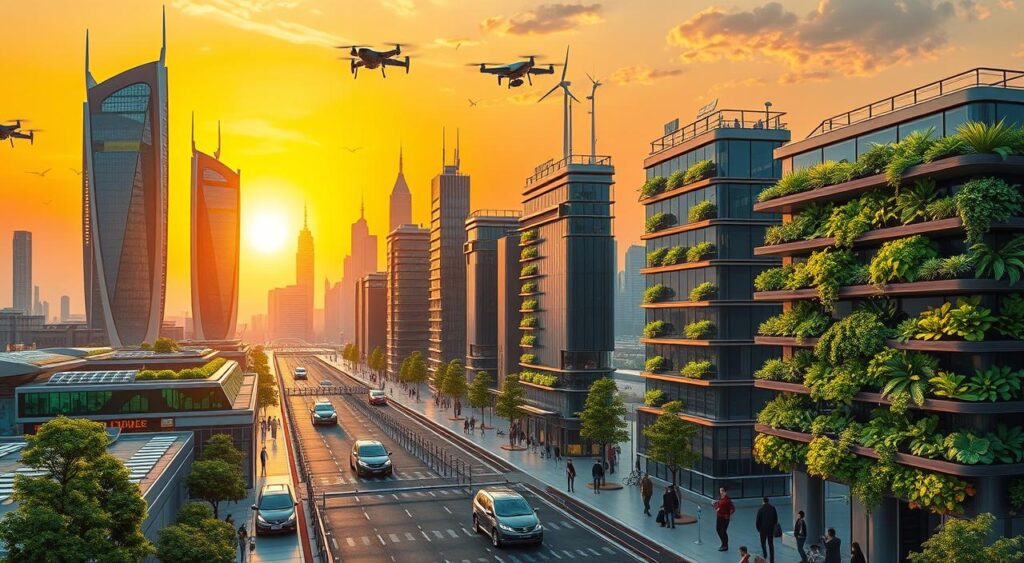
| Technology’s Impact on Society | Positive Impacts | Negative Impacts |
|---|---|---|
| Communication |
|
|
| Education |
|
|
| Healthcare |
|
|
Technology’s impact on society and culture is complex. It has both good and bad sides. As we keep using new tech, finding a balance is key. We need to make sure everyone can enjoy tech’s benefits while avoiding its downsides.
Industrial Applications and Economic Implications
Technology has changed the industrial world a lot. It has made manufacturing and production systems better. New technologies like robotics and automation have improved efficiency and quality. These changes have also helped the economy grow and jobs evolve.
Manufacturing and Production Systems
Advanced technologies have changed how we make things. Automated systems use smart algorithms and sensors. They have replaced manual work in many areas.
This has led to more products, better quality, and lower costs. For example, 3D printing has changed how we design and make products. It allows for quick prototyping and on-demand production.
Economic Growth Through Technology
Technology has been key to economic growth. It has made things more efficient, opened new business models, and created new markets. The Industrial Revolution was sparked by steam engines, boosting industries and trade.
Today, digital technologies have started the digital economy. This has opened up new ways to make money and grow the economy.
Job Market Evolution
- The job market is changing fast because of technology. Some jobs are disappearing, but new ones are appearing. These include roles in data analytics, software development, and renewable energy.
- To keep up, people need to keep learning. They must get the skills needed for a tech-driven economy.
- It’s important for governments and schools to help workers. They need to support lifelong learning and upskilling. This way, workers can take advantage of new opportunities.
“The future of work is not about AI replacing humans, but about AI assisting and empowering humans to be more productive and creative.”
Ethical Considerations in Technological Development
As new technologies and scientific discoveries change our world, we must think about their ethics. Issues like data privacy, AI ethics, and the environment’s impact are key. The ethics of tech development are getting more complex.
Technologies like facial recognition and genetic engineering raise big concerns. We need to balance tech progress with ethics for responsible innovation. This means creating strong ethics for tech design and use to help society.
Technoethics is a field that looks at tech’s ethics. It helps us understand tech’s social impact and how to use it right. Scholars like Hans Jonas and Mario Bunge stress the link between tech and ethics, urging us to think about the bigger picture.
There are many ethical areas in tech, like computer and engineering ethics. We need clear rules and practices to keep ethics in tech development. This ensures values like dignity and fairness are followed.
The impact of new tech on society is growing. We must tackle ethical and social issues now. By focusing on technoethics and responsible innovation, we can make tech work for everyone’s good.
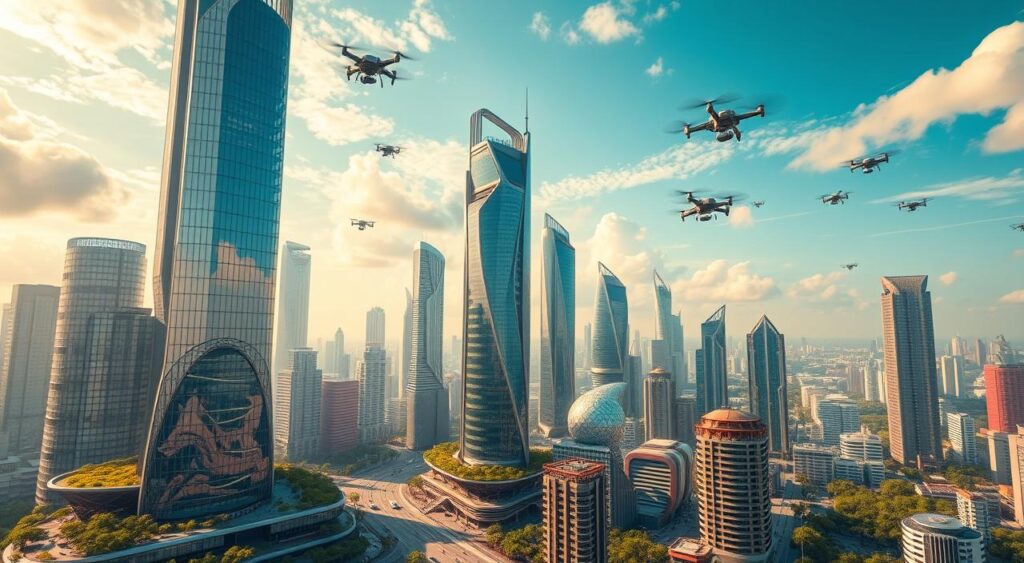
| Ethical Consideration | Description | Potential Challenges |
|---|---|---|
| Data Privacy | Ensuring the protection of personal information and preventing unauthorized access or misuse of data. | Balancing data collection and use with individual privacy rights, especially in the digital age. |
| AI Ethics | Addressing the ethical implications of artificial intelligence, including issues of bias, transparency, and accountability. | Ensuring AI systems are designed and deployed in a responsible and equitable manner. |
| Environmental Impact | Minimizing the environmental footprint of technological advancements and promoting sustainable solutions. | Addressing the energy consumption and waste generated by technological systems. |
| Digital Divide | Ensuring equal access to technological resources and addressing the disparities in digital literacy and opportunities. | Bridging the gap between those who have access to technology and those who do not. |
“The power to change human beings through genetic modification and biomedical interventions is expanding with technologies like CRISPR and synthetic biology. Ethical principles such as dignity, fairness, and the common good must be considered when wielding the power to modify and enhance humans.”
As we explore new tech and science, ethics must be a top priority. This way, our innovations can truly help humanity and lead to a better future.
The Future of Technology: Emerging Trends and Possibilities
The future of technology is full of promise. New developments and disruptive technologies will change our world. Artificial Intelligence (AI) and Machine Learning (ML) will get smarter, changing how we use technology.
By 2034, AI will be everywhere in our lives. It will change how we use technology every day.
Artificial Intelligence and Machine Learning
Natural language processing will make voice control the norm. This will make using technology easier. Robots will also become more common in jobs like warehouse work and building.
This will make work more efficient and productive.
Sustainable Technology Solutions
We need to fight climate change, and technology will play a big role. In the next decade, tech companies will have to cut carbon emissions. They will also use clean energy more.
This will help make our future more green.
Integration of Human and Machine Capabilities
Technology will soon let humans and machines work together better. Brain-computer interfaces and augmented reality will improve our abilities. New tech like wireless soft e-skin and brain-reading will change how we interact with the world.
This will make the line between humans and machines less clear. It will open up new possibilities for us.

